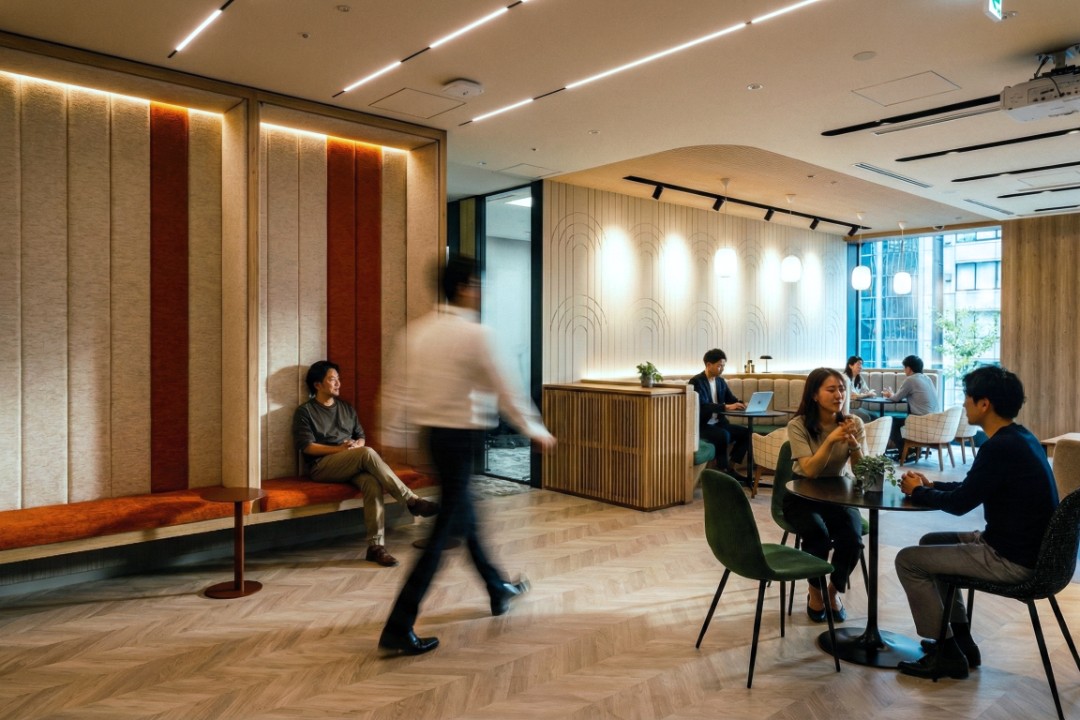What is a managed Office?

Modern workplaces have come a long way from traditional offices. Case in point: the growing popularity of managed workspaces. These alternative office solutions are operated by a facility management company that runs and provides a move-in ready office space to rent out to other businesses. As opposed to conventional leases — which often involve complex contracts, large deposits, and DIY office setups — managed offices remove the burden of setup and day-to-day management. What’s more, they check all the right boxes for businesses that want flexibility, professional infrastructure, and a workspace that can grow with them.
Why Do Businesses Choose Managed Offices?
Managed offices let startups and small businesses adapt their workspace to their current team strength or future plans, without signing long-term leases. This allows them to scale up or down quickly, depending on the demands of a dynamic market. They’re also appealing because clients can make monthly payments to use a managed office’s furniture and infrastructure instead of shelling out for these costs upfront. Teams can walk into a fully functioning office with desks, Wi-Fi, and reception services without taking on the hassles of administrative or maintenance tasks.
What’s Included in a Managed Office?
When you sign an agreement for a managed office, you get more than just four walls and a few desks. It’s a fully equipped work environment you can personalise to accommodate the needs of your team and highlight your brand values. The provider will give you options for colour schemes, furniture, and lighting that you can tailor to your specific needs.
You also get a lot by way of operational support as the provider handles behind-the-scenes services like cleaning, maintenance, security, and utilities. This ensures that your team doesn’t need to get involved in managing facility issues and that you don’t need to hire vendors to handle them. And most importantly, the office infrastructure — think high-speed internet, phone lines, and secure servers — is ready to use and its upkeep managed by professionals.
When scouting managed offices, look into the dedicated business facilities they offer. You’ll typically have access to private meeting rooms for client presentations, breakout spaces for team brainstorming sessions, and quiet zones for more focused work. You can even sign up for features like kitchenette or pantry facilities, on-site car or bike parking, and storage space.
How Is a Managed Office Different from a Serviced Office?
On the face of it, managed and serviced offices are similar models, but they’re actually quite distinct in several ways. The main difference lies in the customisation and branding options clients can ask for. With a managed office, you can have a say in the look and feel of your workspace. So you can choose your own layout, pick décor that reflects your brand’s visual identity, and design the premises to suit your team’s working style. But serviced offices come with a standard layout, décor, and furniture.
Then there’s the matter of contracts. Managed offices are better choices if you’re looking for stability and long-term value as they entail a 12-36 month commitment. On the other hand, their serviced counterparts are ideal for temporary setups or small teams that need a base to work out of as you can rent them by the month, or even by the day. However, this makes them more expensive in the long run.
Serviced offices come fully stocked with amenities like desks, printers, and coffee machines, and staff like receptionists and cleaning crews. In contrast, you can choose the features like communal areas, conference rooms, printing, scanning, and photocopying stations in a managed office, which works better if you want a more permanent workspace solution.
What Are the Main Advantages of a Managed Office?
Managed offices offer businesses a combination of traditional leasing and serviced office benefits so that clients benefit from flexibility, cost-effectiveness, and operational support, while allowing for company-specific configurations and room to expand.
Brand Consistency
A managed office is a middle ground between traditional and serviced offices in terms of making a workspace look and feel like your own. Instead of being boxed into a standard layout, your configuration requests can include everything from open-plan desks to private offices, based on how your team works best. Visual elements like colours, logos, and signage can be placed throughout the space to reinforce a consistent brand identity among employees and visitors.
Lower Administrative Burden
If facility management is something you’d rather not deal with, then a managed office is the way to go. The provider takes charge of everyday responsibilities like cleaning, security, and maintenance. You also get IT and infrastructure support, including setup and internet troubleshooting, networks, and phone systems. Many providers even include services like mail handling, call forwarding, and staffed reception areas.
Privacy and Security
Managed offices give you exclusive access to your space, as opposed to coworking spaces or serviced offices, where you have to share the work environment to varying degrees. So you can opt for privacy features like controlled access, CCTV monitoring, and IT protections like firewalls and encrypted networks. These features make managed offices the best bet for legal firms, finance companies, or tech startups that handle confidential information.
Are there Downsides to a Managed Office?
While you can walk into a managed office on day one and get to work, they take time to set up — usually 6-8 weeks. This is because there’s a lot to do before you can move into the premises, like planning the configuration, getting furniture and equipment, and installing tech infrastructure. They may not be the best option if you’re a new startup or small business unsure about your long-term requirements. The experience you get also depends on whether your provider meets your expectations when it comes to services rendered and communication consistency. So you should vet the facility management company to ensure they meet your expectations.
How Much Does a Managed Office Cost?
Your managed office costs are determined by several criteria: location, office size, and service level. Most agreements follow a monthly or quarterly rent schedule and cover utilities, IT infrastructure, and cleaning. Over and above that, you might pay one-time and negotiable fees for customisations like bespoke furniture, signage, or specialised meeting rooms.
Managed offices also rule out the need for large deposits, design consultancy, and separate service contracts, which are standard in traditional leases. They’re often more affordable in the long run, especially for growing teams that need flexible options. Serviced offices can cost more on a monthly basis because of the convenience they offer, but that price comes with fewer options for control. If you’re on a budget, check the contract for hidden charges, which may come in the form of additional services like extra meeting room hours, IT support beyond the base package, and weekend access.
How to Choose the Right Managed Office
The first thing on your managed office checklist should be location. This affects everything, from how easy it is for your team to get to work, to how close you are to clients and partners. Being near transport hubs can also make it easier to make it to meetings and recruit talent.
Space is an important consideration, mostly because many businesses underestimate how quickly they’ll need more desks or meeting rooms. So use your current headcount to judge how big your workspace should be and leave room to grow. A good managed office provider will project your needs and design a space that scales with you.
Not all managed offices offer the same amenities and services. Some include dedicated IT support, reception staff, or private lounges, while others stick to the basics. Read through the contract to understand what’s included and what counts as an additional service. Always choose a provider that aligns with your work style and long-term goals.
Looking to Create an Efficient Workspace for Your Business?
A managed office provides your team with a dedicated workspace that balances flexibility and professionalism. If you’re eager to have a branded office environment without the burden of managing facilities, get in touch with us now. Our expert consultants will guide you through your needs, explore suitable options, and ensure your workspace drives continuous business growth. Don’t let logistical challenges hinder your progress—take the next step today!


